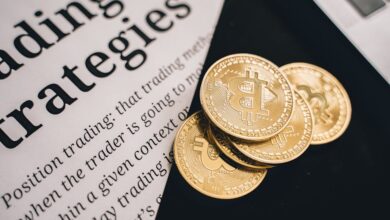Navigating Gold Futures and Options: Strategies for Speculating on Gold Prices and Market Trends

In an ever-evolving financial landscape, gold continues to shine as a safe haven asset for investors seeking stability amid economic uncertainty. The allure of gold investment transcends mere ownership of physical gold; it extends into the realm of derivatives, specifically gold futures and options. These financial instruments offer investors unique opportunities to speculate on gold prices, leverage positions, and hedge against market fluctuations. Understanding these tools is essential for anyone looking to navigate the complexities of the gold market.
In this article, we will explore the intricacies of gold futures and options, providing a comprehensive guide to gold investment strategies. We will analyze current gold market trends, highlighting how derivatives influence gold prices and the overall dynamics of safe haven assets. Additionally, we will delve into the role of gold in today's economy, examining its significance as an inflation hedge and its importance in central banks' gold reserves. Whether you are interested in gold mining, gold ETFs, or even luxury gold collectibles, this article aims to equip you with the knowledge needed to make informed decisions in the world of gold trading and investment. Join us as we uncover the layers of this timeless commodity and its continual impact on global gold demand and market analysis.
- 1. Understanding Gold Futures and Options: A Comprehensive Guide to Gold Investment Strategies
- 2. Analyzing Gold Market Trends: How Derivatives Influence Gold Prices and Safe Haven Assets
- 3. The Role of Gold in Today's Economy: From Inflation Hedge to Central Banks' Gold Reserves
1. Understanding Gold Futures and Options: A Comprehensive Guide to Gold Investment Strategies
Understanding Gold Futures and Options: A Comprehensive Guide to Gold Investment Strategies
Investing in gold has long been regarded as a reliable strategy for wealth preservation and capital appreciation. Gold serves as a safe haven asset, particularly during periods of economic uncertainty and inflation. In this section, we will delve into gold futures and options, two popular derivatives that allow investors to speculate on gold prices and manage risk effectively.
Gold futures are contracts that obligate the buyer to purchase, and the seller to sell, a specific amount of gold at a predetermined price on a future date. These contracts are standardized and traded on commodities exchanges, making them a popular choice for investors looking to gain exposure to the gold market. By utilizing gold futures, investors can take advantage of fluctuations in gold market trends without the need to hold physical gold. This can include gold bullion, gold bars, or gold coins investing.
Options on gold futures give investors the right, but not the obligation, to buy or sell a futures contract at a specified price before a certain date. This flexibility allows traders to hedge their positions or speculate on future price movements with limited risk. For instance, an investor might buy a call option if they anticipate a rise in gold prices, thus potentially benefiting from the increase without committing to a full futures contract.
Understanding gold market analysis is crucial for making informed decisions in gold futures and options trading. Key factors influencing gold prices include global gold demand, central banks' gold reserves, and mining production. Additionally, geopolitical tensions and economic indicators can significantly impact investor sentiment and gold market trends.
Gold investment strategies can also encompass gold ETFs and physical gold, providing investors with various avenues to gain exposure to the precious metal. While gold ETFs offer a convenient way to invest in gold without the complexities of storage and security, physical gold—such as jewelry, coins, and bullion—remains a tangible asset that many prefer.
Moreover, the gold recycling industry is gaining traction as investors seek sustainable practices in gold mining and production. With increasing awareness of ethical sourcing, sustainable gold mining is becoming essential in the gold trade. It is also important to consider the implications of gold smuggling and its effects on the global gold market.
In conclusion, gold futures and options present unique opportunities for investors to speculate on gold prices while managing risk. By understanding the dynamics of the gold market, including gold technology, inflation effects, and trends in gold refining, investors can develop robust strategies to navigate the complexities of gold investing. As the landscape evolves, staying informed about gold and cryptocurrency trends may also provide valuable insights into the future of gold investments.
2. Analyzing Gold Market Trends: How Derivatives Influence Gold Prices and Safe Haven Assets
The dynamics of the gold market are intricately linked to derivatives, particularly gold futures and options, which play a crucial role in influencing gold prices. Analyzing gold market trends requires an understanding of how these financial instruments interact with the underlying asset—gold itself.
Gold futures allow investors to speculate on the future price of gold, providing a mechanism to hedge against volatility. When traders anticipate rising gold prices, they may buy futures contracts, driving demand and consequently pushing up the spot price of gold. Conversely, if there is sentiment that prices will decline, selling futures can lead to lower prices. This speculative behavior is a key driver in shaping market trends.
The interplay between gold and inflation is another critical factor influencing market dynamics. As inflation rises, gold is often seen as a safe haven asset, leading to increased investments in gold ETFs and physical gold. Central banks also play a significant role in this arena; their decisions to buy or sell gold reserves can drastically impact gold prices, as they are among the largest holders of gold bullion. The stability offered by these reserves reinforces gold's reputation during economic uncertainty.
In addition, the evolution of gold technology, including advancements in gold recycling and sustainable gold mining practices, is affecting how gold is produced and traded. The growth of the luxury gold market, including gold jewelry and collectibles, creates additional demand that can influence prices. Moreover, the emergence of gold and cryptocurrency as alternative investment avenues has added a new layer of complexity to gold market analysis. Investors are increasingly considering gold coins investing as a tangible form of wealth preservation in a digital economy.
Finally, global gold demand remains a significant factor in shaping price trends. Countries with growing economies often increase their gold production and refine existing supplies to meet rising demand. This includes not just mining but also addressing issues like gold smuggling, which can distort market perceptions. Understanding these trends is essential for anyone looking to navigate the complexities of gold investment and make informed decisions in the context of the broader gold market.
3. The Role of Gold in Today's Economy: From Inflation Hedge to Central Banks' Gold Reserves
Gold has long held a significant place in the global economy, serving various roles that extend beyond mere investment. In today's financial landscape, it is particularly recognized as a safe haven asset, especially during times of economic uncertainty and inflation. As inflation rises, many investors turn to gold as a hedge against decreasing purchasing power, reinforcing the importance of gold in economic strategies. This trend is reflected in increasing global gold demand, highlighting its role as a reliable store of value.
Central banks around the world maintain substantial gold reserves, viewing gold as a critical component of their monetary policy. These reserves provide stability and confidence in a nation’s currency, especially in times of economic turmoil. The gold standard, although no longer widely used, historically linked currency value to gold, further emphasizing its importance in financial systems. Today, central banks continue to accumulate gold to diversify their reserves and mitigate risks associated with fiat currency fluctuations.
The rise of gold ETFs has made gold investment more accessible to retail investors, allowing them to speculate on gold prices without physically holding the asset. This has contributed to the increased liquidity in the gold market, driving gold market trends. Furthermore, innovations in gold technology and sustainable gold mining practices have emerged in response to growing environmental concerns, ensuring that the gold trade remains viable and ethical.
Gold also plays a crucial role in various industries, from luxury gold jewelry to high-tech applications. The recycling of gold from old jewelry and electronic devices contributes to global gold production, reducing the need for new mining activities and promoting sustainable practices. This multifaceted nature of gold—from gold bullion and coins to collectibles—underlines its enduring appeal in investment portfolios.
As new financial instruments, such as gold futures and options, enter the market, they provide additional avenues for speculating on gold prices. Investors can leverage these derivatives to hedge against market volatility, making them an integral part of modern trading strategies. As gold continues to evolve, its role in the economy will likely adapt, reflecting changes in global market dynamics and investor preferences, including the emerging relationship between gold and cryptocurrency.
In summary, gold's multifaceted role in today's economy—from a hedge against inflation to a vital asset for central banks—reinforces its status as a cornerstone of financial stability and investment strategy. Understanding gold market analysis and trends will equip investors to effectively navigate the complexities of gold investment in a rapidly changing economic landscape.
In conclusion, understanding gold futures and options is vital for anyone looking to engage in gold investment strategies effectively. As we’ve explored, the dynamics of the gold market are influenced by a variety of factors, including current gold prices, market trends, and economic conditions. Gold has consistently remained a safe haven asset, particularly during times of economic uncertainty and inflation, making it an attractive option for investors.
By analyzing the complex interplay between derivatives and the underlying gold market, it becomes apparent that tools like gold ETFs and futures contracts can provide unique opportunities for speculation and investment. Additionally, the role of gold in today’s economy—ranging from its status as a hedge against inflation to its significance in central banks' gold reserves—highlights its enduring value.
As gold continues to be a focal point in global trade and investment, understanding its various forms, including physical gold, gold bullion, and gold coins, will empower investors to make informed decisions. Furthermore, with growing concerns around sustainable gold mining practices and the rise of gold recycling, the future of gold investment is increasingly intertwined with environmental considerations.
Ultimately, whether considering gold collectibles or exploring the intersection of gold and cryptocurrency, staying informed about gold market analysis and trends will help investors navigate this complex landscape. As global gold demand evolves, those who adapt their strategies will likely find success in this timeless investment.
References:
– [Your sources here]





